Featured
Learning to live with Covid-19
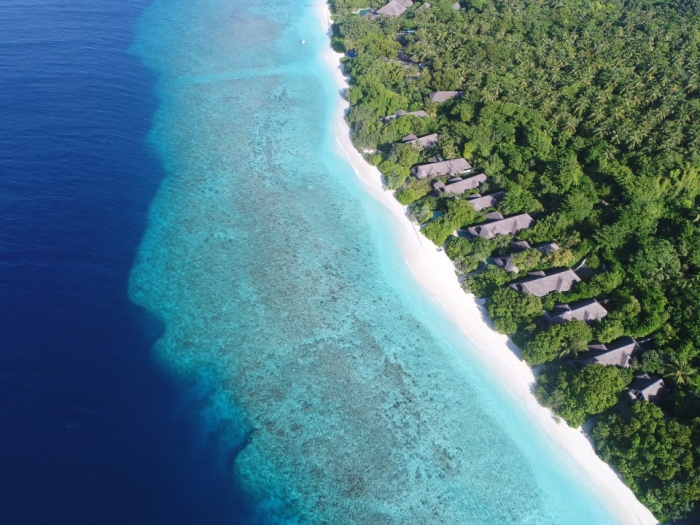
By Sonu Shivdasani
As lockdowns go, we mustn’t complain. My wife, Eva, and I have been marooned on Soneva Fushi — the luxury resort we own in the Maldives — for the past four months, alongside some 70 foreign guests, who stayed on as the country closed its borders, rather than risk going back home. Free to roam our castaway island paradise, life tends to revolve around morning yoga, afternoon swims, and sunset cocktails overlooking the turquoise waters of the Indian Ocean.
The other day, as I was taking my swim in the lagoon, I came eyeball-to-eyeball with a two-metre-long reef shark. In my twenty-five years living on Soneva Fushi, I have never seen such a big shark swimming so close to shore. In other parts of the world, lockdowns have led to goats, swans and wild boar taking over village greens and town centres. In the Maldives, it’s the (harmless) sharks, dolphins and manta rays that are enjoying a holiday without humans.
As enjoyable as my lockdown has been, it is surely time for it to come to an end. Very few have been as fortunate as I. For most people, in the Maldives and other countries that imposed drastic restrictions to contain the virus, the economic and social costs of being locked down have been terribly high.
Moreover, as the weeks pass, and our understanding of Covid-19 improves, it is clear that, while potentially lethal for older people and those with underlying health complications, for healthy, younger people, the chance of dying from the virus is vanishingly small. In badly hit parts of New York City, for instance, where infection rates were as high as 25 per cent, for those under 45 years the survival rate was 99.98 per cent.
As new information pours in from around the world, and we develop a more nuanced understanding of Covid-19, our measures to control the virus must also become more sophisticated. General lockdowns and international border closures – which are devastating huge chunks of the economy, and the lives and livelihoods of hundreds of millions of people – don’t make sense, when rapid testing, contract tracing, and good hygiene are so effective at preventing the virus’s spread — and when the virus poses such a tiny threat to young and middle-aged people.
The greatest fear is fear itself.
Franklin D. Roosevelt
Perhaps one of the biggest obstacles to easing the lockdown is fear. The world’s newspapers and TV stations have gorged on the coronavirus, producing blanket coverage of mortality rates and other frightening details. Not surprisingly, the ‘danger indicator’ that sits in the left side of our brains remains on high alert. Like a thermometer, once the danger indicator rises, it takes a lot of shaking with facts and reason to bring it back down.
To quote Hans Rosling: “We need to learn to control our drama intake. Uncontrolled, our appetite for the dramatic goes too far, prevents us from seeing the world as it is, and leads us terribly astray.”
Here are some facts to reduce our intake of drama, and temper our fears of Covid-19:
- Due to a misunderstanding of the true extent of the infection in China, initial projections of a 3-5 per cent fatality rate were far too high.
- Many countries vastly overstated their likely number of deaths. Uppsala University in Sweden, for instance, predicted 90,000 deaths in one month, but Sweden has had a total of 4,800 virus deaths to date.
- Likewise, on the 29 March, Columbia University issued a report highlighting a need for 136,000 hospital beds in New York City. In the end, 12,000 sufficed.
- According to recent research by the United States Biodefence and Countermeasures Centre, the half-life of the Covid-19 virus in mild conditions such as 75oF and 25 per cent humidity is 18 hours. But when the temperature rises to 95oF and the humidity rate increases to 80 per cent (conditions found in the Maldives and other tropical countries), the half-life reduces to 1 hour.
- According to the United States Centre for Disease Control (CDC), there are no documented cases of a person becoming infected from a surface contaminated with Covid-19. Yet, every hotel and resort mini-film I have watched about reopening – including our own – has footage of an employee diligently wiping down surfaces.
- A Hong Kong study, involving an analysis of 7,324 cases in China, identified 318 distinct outbreaks, all but one of which occurred indoors. This suggests the risk of catching Covid-19 outdoors is low.
I attach a graph produced by Sir David Spiegelhalter of Imperial College, London.

Prof. Spiegelhalter highlights in the graph that coronavirus roughly doubles your chance of death once you hit around 40. While that might sound scary, we have to bear in mind that the risk of death for those under 45 or so is extremely low – 0.1 per cent per year. A 40-year-old with coronavirus therefore has a risk of death of about 0.2 per cent, rather than 0.1 per cent.
There has been much controversy over the Swedish approach to the virus, which involved far less restrictive measures compared with other European countries. The below table, from Worldometer last week, shows that Sweden suffered lower deaths per capita than countries that enforced strict lockdowns.

Our understanding of, and knowledge of how to treat the virus has evolved considerably since those dark days at the beginning of the year:
There have been breakthroughs in treating Covid-19 by the medical world: Gilead with Remdesivir, and the Dana-Farber using Ibrutinib which avoided cancer patients from needing to be hospitalised.
There is also the example of my Oncologist, Dr Abdul Kadir Slocum (I was diagnosed with stage-four cancer at the end of 2018. Dr Slocum cured me by traditional chemotherapy, alternate wellness remedies.
As Dr. Slocum recently wrote to us:
“I’m not a frontline Covid physician but unfortunately when some of our cancer patients got Covid I treated them together with my colleagues. We used anti-coagulants, antibiotics, and anti-virals as conventional therapeutics together with high dose vitamin C, Andrographis, thyme extract etc. as complementary therapies and all of our patients have gotten better with such treatment.”
The low fatality rate for those who are healthy and not old, the limitations of the virus’s spread, and the improvements in testing and treatment, means that we have the opportunity to return to (almost) normal, albeit with robust measures in place to protect vulnerable groups.
The importance of protecting vulnerable groups should not be taken lightly. Let me flash back to 1979, when I was 13. My morning ritual with my father was to drive to the local tennis club and play a game before breakfast. On that particular morning, halfway through play, my father sat down, short of breath. He asked me to practice against the wall while he recovered his breath. An hour later, he died of a heart attack. To this day, I wonder whether if we had skipped that morning ritual, he wouldn’t have died. The worry that one might have had an impact on reducing the life of one’s parent is something that I would not want to wish on anyone else. We must not make a similar mistake over coronavirus, as we reopen our economies we must consider adequate protection for older and vulnerable people.
How do we start on the road to recovery? To start with, we should maintain the personal hygiene habits that the virus has taught us, such as frequently washing hands, and following the traditional Asian courtesy of wearing a mask if you feel unwell. These habits will also reduce the incidence of other viruses such as seasonal flus and colds.
Above all, new investments in health infrastructure put in place over the past 12 weeks, such as more hospital capacity, extensive and rapid testing, and sophisticated contact tracing, means that blunt control tools, such as lockdowns, can now be relaxed before they destroy ever larger parts of the economy.
Then, we just need to work on our fear, which, in the final analysis, may have caused more damage than the virus itself.
Editor’s Note: This op-ed was originally published on Linkedin by Sonu Shivdasani. Sonu is the founder and CEO of Soneva, which owns luxury resorts Soneva Fushi and Soneva Jani in the Maldives, and Soneva Kiri in Thailand.
Entertainment
New Year’s Eve Gala at JEN Maldives Malé by Shangri-La to feature live performance by Nasooh

JEN Maldives Malé by Shangri-La is preparing to host a vibrant New Year’s Eve Gala Night on 31 December 2025, inviting guests to welcome 2026 with an evening of fine dining, live entertainment, and festive celebration.
The event will be headlined by Mohamed Nasooh, one of the Maldives’ emerging musical talents whose voice has earned national recognition. Nasooh first rose to prominence as a former vocalist of the popular band 2ofus, which represented the Maldives internationally and achieved notable success as the 2nd Runner-Up at the Battle of the Bands International. His growing popularity on TikTok, combined with his expressive vocal performances, has made him a well-loved figure among audiences of all ages.
Guests attending the New Year’s Eve Gala Night can look forward to a memorable live performance from Nasooh, who will bring his distinctive vocal style and stage presence to the celebration as the country ushers in a new year.
Adding to the excitement, the evening will also include a special grand prize, with details set to be announced soon. The announcement has already generated anticipation and is expected to be a highlight of the event.
The Gala Night will offer an elegant dining experience and a festive atmosphere, providing an inviting setting for families, couples, and friends wishing to celebrate the start of 2026 in style. The full programme and menu will be shared in the coming days.
JEN Maldives Malé by Shangri-La welcomes guests to join this exceptional evening—an occasion filled with music, flavour, and celebration marking the arrival of the new year.
Featured
Blue Mind Theory brought to life at InterContinental Maldives Maamunagau
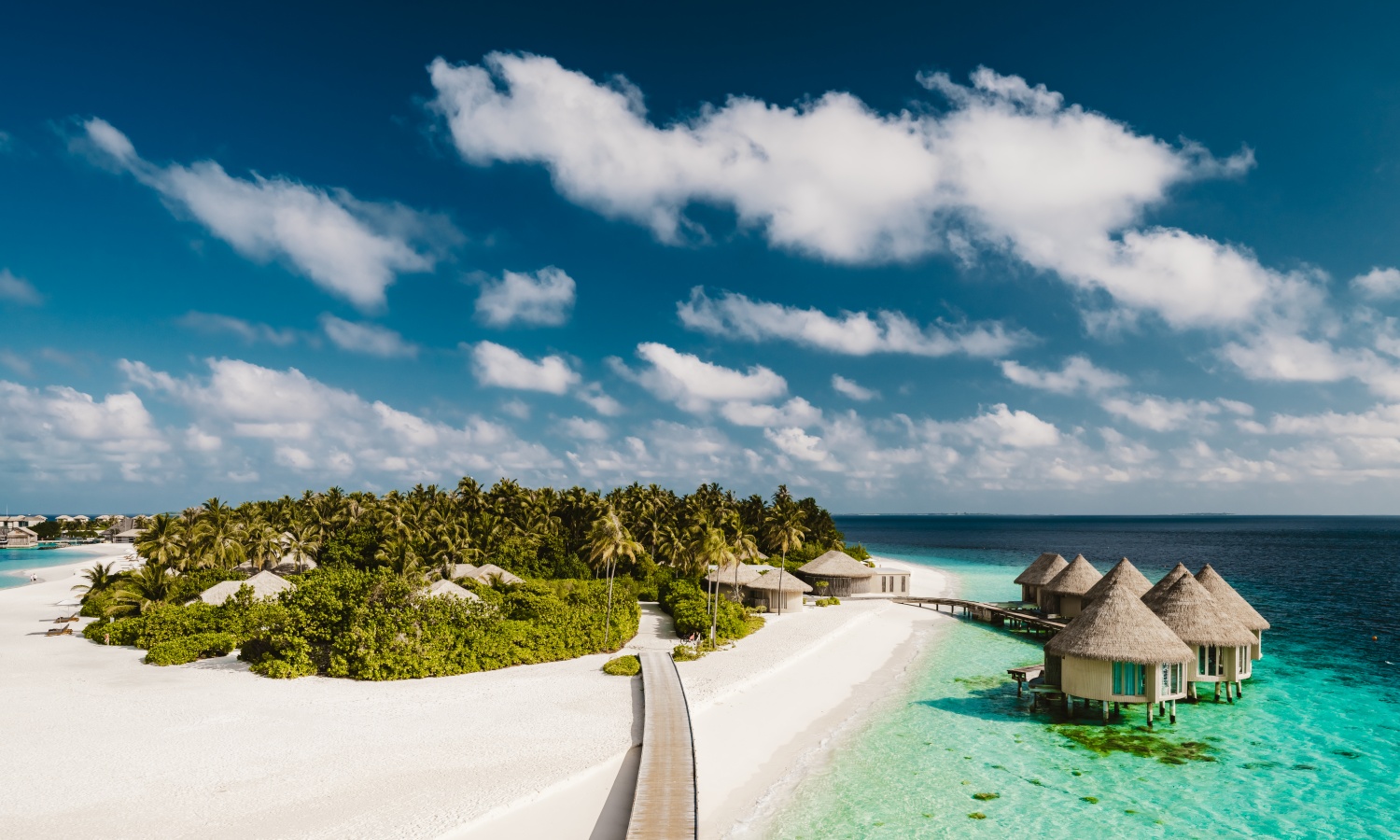
InterContinental Maldives Maamunagau Resort, located amid the clear waters of Raa Atoll, has introduced an experiential interpretation of the Blue Mind Theory through a new tailored package. The scientifically rooted concept suggests that being near, in, on, or under water can enhance happiness, calmness, and a sense of connection, while also boosting creativity and reducing stress. According to a UK survey by the Ocean Conservation Trust, 94% of participants reported improvements to their wellbeing after interacting with the ocean.
The resort offers direct access to one of the Maldives’ most vibrant marine environments and has curated a selection of wellness, adventure, and relaxation experiences aligned with the restorative principles of the Blue Mind Theory. Situated within the Maldives’ largest natural lagoon, its colourful house reef is home to blacktip reef sharks, turtles, and manta rays. As a key partner of The Manta Trust, InterContinental Maldives provides opportunities for guests to swim with manta rays in their natural habitat and learn about conservation efforts guided by experts.
Insights from The Manta Trust help illustrate the theory in practice. Meral Hafeez, Project Manager at the organisation, observes that encountering manta rays for the first time often brings a profound emotional response: “Time seems to slow down, fear is replaced with wonder, and what remains is a palpable sense of joy. Much of this stems from the grandeur the sea evokes – you are constantly humbled by its immensity. Feeling a sense of awe increases wellbeing and deepens our connection to the world.”
Drawing on this specialist knowledge, the resort’s Blue Mind package includes overwater meditation, guided seaside yoga, tailored treatments at AVI Spa, snorkelling sessions with The Manta Trust, and a private dinner under the stars. Guided yoga and meditation sessions held at dawn and dusk promote mindfulness while synchronising with the natural rhythm of the ocean. AVI Spa offers treatments inspired by marine elements and water-based techniques to reduce anxiety, restore balance, and support circadian wellbeing.
Guests may also choose a five-course dinner with champagne on a remote sandbank, offering a uniquely tranquil setting surrounded entirely by the Indian Ocean. The resort’s secluded location enhances its suitability for practising the principles of the Blue Mind Theory, supported by ongoing involvement from The Manta Trust.
Residence rates begin at USD 4,745++ per night, inclusive of a variety of tailored experiences.
Featured
Noku Maldives unveils long-term Sea Turtle Conservation Programme
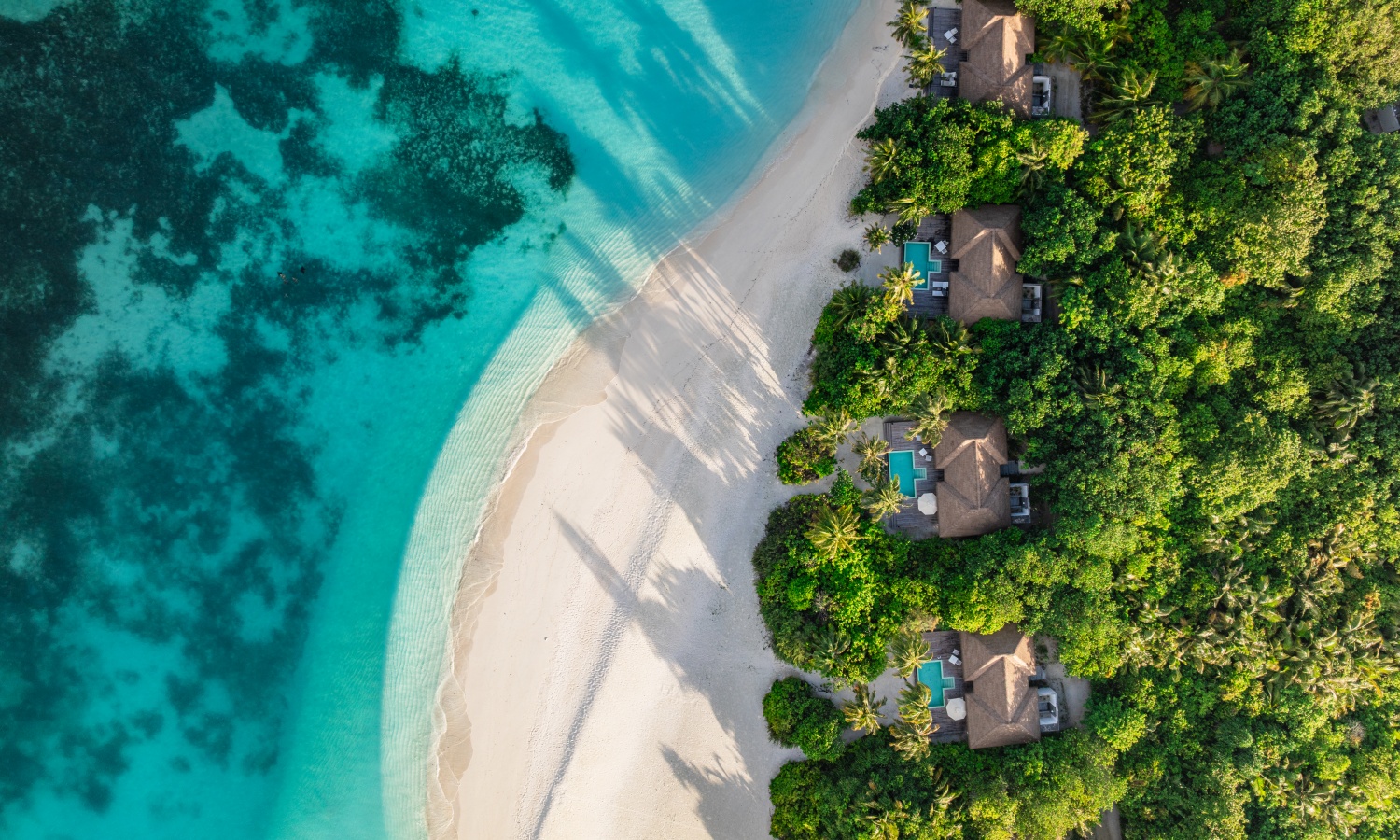
Noku Maldives, Vignette Collection, has announced the launch of a dedicated Sea Turtle Conservation Programme, developed in partnership with the Atoll Marine Conservation Centre (AMCC). Beginning on 25 November 2025, this long-term initiative strengthens the resort’s commitment to the Vignette Collection pillar Means for Good, reflecting a considered approach to environmental stewardship and responsible hospitality.
The waters surrounding Noku Maldives support a naturally thriving ecosystem, characterised by extensive seagrass meadows, coral-rich shallows, and warm lagoons that provide an essential refuge for sea turtles. In recent years, the island has recorded multiple nesting events along its shores — a rare and significant indicator of the health of its marine environment. The new programme aims to safeguard and enhance this natural heritage.
As part of the collaboration, a full-time AMCC marine biologist will be stationed on the island to lead a comprehensive portfolio of conservation activities. This will include monitoring the local sea turtle population, assessing reef and coral health, supporting long-term scientific research, and conducting fieldwork and outreach initiatives across neighbouring islands.
The programme will also enhance guest engagement through educational talks, guided snorkelling experiences, and hands-on conservation workshops, offering visitors the opportunity to connect with the underwater world in an enriching and meaningful way.
The initiative complements Noku Maldives’ growing suite of Means for Good activities, which already include reef conservation studies, coral restoration projects, cultural experiences, and community-led programmes. Together, these efforts underpin the resort’s commitment to delivering stays that are rooted in authenticity, responsibility, and deep respect for the natural environment.
“Our lagoon has always been a peaceful refuge for sea turtles and marine life,” said Hussain Shahid, General Manager of Noku Maldives. “This partnership with AMCC reflects our dedication to protecting these waters and ensuring they continue to flourish. By bringing conservation, community involvement, and guest education together, we hope to create meaningful and lasting impact for the atoll.”
-
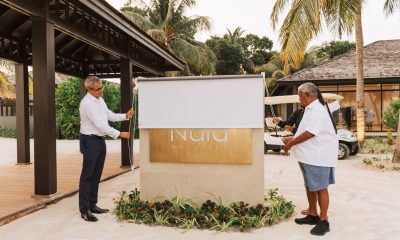
 News1 week ago
News1 week agoInnahura upgraded and relaunched as Nala Maldives by Jawakara
-

 Cooking1 week ago
Cooking1 week agoJW Marriott Maldives Kaafu Atoll Island Resort reveals two-night culinary collaboration with Chef Stefan Fäth
-
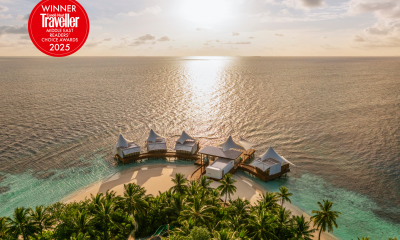
 Awards1 week ago
Awards1 week agoMarriott Maldives resorts secure top rankings in Condé Nast Traveller Middle East 2025
-

 Featured1 week ago
Featured1 week agoSweet traditions: Canareef Resort hosts festive cake mixing ceremony
-
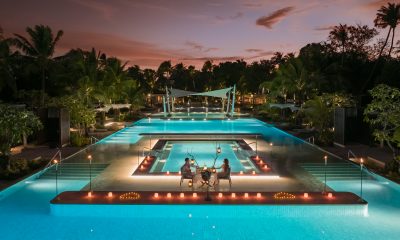
 Featured1 week ago
Featured1 week agoKuda Villingili Maldives crafts poetic Valentine’s escape ‘Through the Sands of Time’
-

 Featured1 week ago
Featured1 week agoLily Beach Maldives unveils ‘Black & White Vintage’ festive season
-

 Featured1 week ago
Featured1 week agoThe Nautilus Maldives unveils ‘An Easter Canvas’ of colour and creativity
-

 Featured1 week ago
Featured1 week agoFestive spirit arrives early at Ayada Maldives with cake mixing tradition








